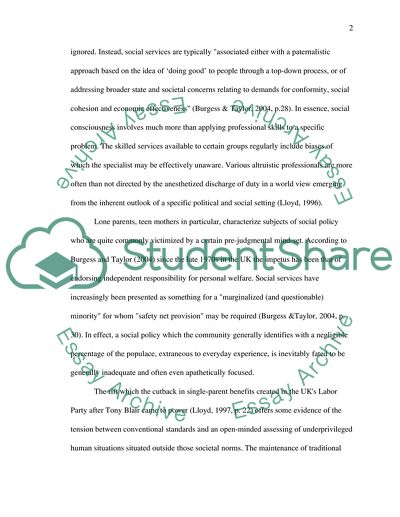Cite this document
(“Social Policy Analysis Applied to the Lone Parent Family Essay”, n.d.)
Retrieved from https://studentshare.org/sociology/1535580-social-policy-analysis-applied-to-the-lone-parent-family
Retrieved from https://studentshare.org/sociology/1535580-social-policy-analysis-applied-to-the-lone-parent-family
(Social Policy Analysis Applied to the Lone Parent Family Essay)
https://studentshare.org/sociology/1535580-social-policy-analysis-applied-to-the-lone-parent-family.
https://studentshare.org/sociology/1535580-social-policy-analysis-applied-to-the-lone-parent-family.
“Social Policy Analysis Applied to the Lone Parent Family Essay”, n.d. https://studentshare.org/sociology/1535580-social-policy-analysis-applied-to-the-lone-parent-family.


